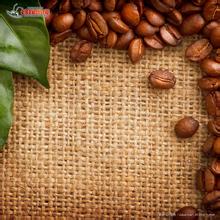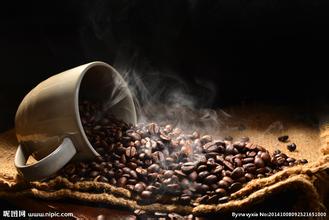Guatemala Antigua Coffee with good Taste Flavor description characteristics of Grinding degree introduction of varieties
Guatemala is located in the tropics. The northern and eastern coastal plain areas belong to tropical rain forest climate, while the southern mountainous areas belong to subtropical climate. There are two dry and wet seasons in a year. The wet season is from May to October, and the dry season is from November to April of the following year. Guatemala has a tropical climate on the narrow, fertile plains of the Pacific Ocean. The central plateau is also the cultural center of Guatemala, where temperatures are mild all year round at 1300 to 1800 meters, with daily temperatures ranging from 18 to 28 ° C, and colder January and February at higher altitudes. Annual precipitation ranges from 2,000 to 3,000 mm in the northeast and 500 to 1,000 mm in the south. Two thirds of Guatemala is mountainous and plateau. The west has the Cuchumatanes Mountains, the south is the Madre Mountains, the west and south belong to the volcanic belt, there are more than 30 volcanoes, Tahu Murco volcano 4211 meters above sea level, the highest peak in Central America. Earthquakes are frequent. To the north lies the Petten Lowlands. There are narrow coastal plains on the Pacific coast. Most of the major cities are located in the intermountain basin in the south. Its northern lowland plain Petén is a tropical rain forest, the volcano in the central highlands can reach 4200 meters. Guatemala's national bird is the Quetzal bird (Phoenix-tailed green quetzal). The people of Guatemala regard the Quetzal bird as a symbol of love, freedom, patriotism and friendship. It has the reputation of "bird of freedom." Quetzal bird likes to live in pairs and is inseparable, so it is also a symbol of love. It was officially declared the national bird by the Guatemala government. It is used as a symbol on national flags, emblems and coins, and legal provisions prohibit the capture of quetzales.
Guatemala has seven major coffee-producing regions: Antigua, Coban, Atitlan, Huehuetenango, Fraijanes, Oriente, and San Marcos.
Each region of coffee beans have their own characteristics, but also for Guatemala won a lot of international praise, especially Antigua it sour, sweet, mellow texture is how perfect coordination; add a hint of smoke, more emphasis on its mystery, after tasting you will have reason not to let yourself look for alternatives everywhere.
Guatemala coffee beans are mostly cultivated in volcanic soils at high altitudes, belonging to the highest Arabica variety. Due to the long ripening period, the beans are medium and dense (Guatemala coffee beans are graded not by particle size, but by the number of defects), and the beans are dark turquoise in color. Aroma, mellow, sweet and fresh pleasant unique acidity is its characteristic, because the aroma and taste of coffee beans are hidden in its acidity. Therefore, coffee beans with this characteristic can be called superior coffee beans. Name Roasted degree Taste characteristics.
Guatemala coffee
depth
Bitter and fragrant, taste good
High-quality coffee is mellow and has a good quality sour, quite well received, is the best material for mixed coffee.
Coffee varieties:
Arabica species:
It accounts for 85% of all coffee production, including Brazil, Colombia, Guatemala, Ethiopia, etc. Beans are green, beans thin, has a special flavor and sweet acid, and other coffee blends drink well. Excellent quality, more suitable for public taste.
Robusta species:
Mainly cultivated on Java Island, Indonesia, drought and insect tolerance; bitter taste, but bitter with fragrance, especially after cooling with a unique sweet taste, suitable for cold coffee, is full-bodied and extremely bitter.
Leberica:
The quantity of this variety is very small, most of them are used for comprehensive coffee and coffee essence, which is difficult to see on the market. The quality is not excellent, and the flavor of the single product is poor.

Important Notice :
前街咖啡 FrontStreet Coffee has moved to new addredd:
FrontStreet Coffee Address: 315,Donghua East Road,GuangZhou
Tel:020 38364473
- Prev

Introduction of varieties of Kilimanjaro Coffee Flavor description and Grinding degree treatment in Tanzania
Tanzania's main coffee producing area, located at the foot of Mount Kilimanjaro, is rich in volcanic soil. Some coffee trees planted here are more than 100 years old. Coffee was first introduced by Christians from Kenya to grow coffee. Coffee trees must be carefully taken care of, weeded and fertilized. And old branches must be cut off so that new branches can grow to maintain the quality of coffee beans.
- Next

Aromatic Ecuadorian Coffee Flavor Description Grind Characteristics Variety Production Estate Introduction
Flavor: balanced acidity, aromatic aroma Roasting method: medium to deep roasting, can make a good blend of coffee, suitable for many uses Evaluation: general Ecuador giant turtle coffee beans from the giant turtle home coffee treasures The best Ecuadorian coffee is grown in the Galapagos Islands, San Cristobal Island, where the best quality coffee in the world is bred
Related
- Detailed explanation of Jadeite planting Land in Panamanian Jadeite Manor introduction to the grading system of Jadeite competitive bidding, Red bid, Green bid and Rose Summer
- Story of Coffee planting in Brenka region of Costa Rica Stonehenge Manor anaerobic heavy honey treatment of flavor mouth
- What's on the barrel of Blue Mountain Coffee beans?
- Can American coffee also pull flowers? How to use hot American style to pull out a good-looking pattern?
- Can you make a cold extract with coffee beans? What is the right proportion for cold-extracted coffee formula?
- Indonesian PWN Gold Mandrine Coffee Origin Features Flavor How to Chong? Mandolin coffee is American.
- A brief introduction to the flavor characteristics of Brazilian yellow bourbon coffee beans
- What is the effect of different water quality on the flavor of cold-extracted coffee? What kind of water is best for brewing coffee?
- Why do you think of Rose Summer whenever you mention Panamanian coffee?
- Introduction to the characteristics of authentic blue mountain coffee bean producing areas? What is the CIB Coffee Authority in Jamaica?

